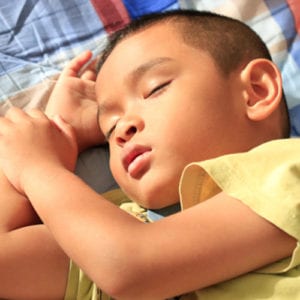
Scotts Valley and Santa Cruz, CA
When it comes to the way your child breathes, what you see or hear can be harmful. Ideally, your child’s breathing should be silent and invisible. If you can see or hear your child breathe, it may be a sign of an airway obstruction—which is one of the major causes behind a sleep breathing disorder such as sleep apnea. In children, an airway obstruction also can lead to other negative consequences for their health such as a jaw malformation or misaligned bite.
In many cases, a sleep breathing disorder in children is improperly diagnosed or not diagnosed at all because the symptoms can mimic behavioral disorders such as ADD or ADHD.
Only a dentist trained in airway management can properly diagnose whether your child may have an airway issue. These children need more air to enter their system, particularly during sleep when the brain should be eliminating the “free radicals” assembled during a day of thinking, reacting, and processing. Instead, the brain of a child with airway problems stays in a state of higher alert trying to deliver more oxygen to the system. This can make it more challenging to fall asleep and stay asleep.
Dr. Sanjeev Kothare, the director of pediatric sleep at NYU, has done research to show that “sleep deprivation impacts 25 to 40 percent of children.” It is common for a chronic mouth breather to also have symptoms of obstructive sleep apnea (OSA), which is a sleep breathing disorder that involves a restriction or blockage of the airway while sleeping. This disorder results in the body being starved of the necessary oxygen it needs to thrive. During episodes of OSA, the brain slightly awakens out of a deep sleep to signal the body that it needs to breathe. Your child may be completely unaware that this is happening, except they may exhibit common symptoms associated with OSA.
Symptoms of OSA in a child include loud snoring or gasping for air while sleeping, behavioral problems, lack of focus, poor performance, and more. Since OSA is often associated with chronic mouth breathing, be sure to discuss your child’s symptoms with the dentist. Further evaluation and testing may be necessary. An airway evaluation is the best way to determine if a child has a sleep breathing disorder, and yields more reliable results in children than a sleep study.
The best way to treat an airway problem is by focusing on developing the upper jaw, and bringing the lower jaw into a proper forward alignment. This can be accomplished through the use of a custom-made oral appliance, but also can be achieved through a course of myofunctional therapy—a series of simple pain-free exercises for the muscles of the mouth and tongue that can widen the airway or correct other negative oral habits.
At Ebrahimian Integrative Dentistry, Jean Shimizu, one of our dental hygienists, is a certified myofunctional therapist who can design a course of exercises tailor-made for each patient.
If you notice your child breathing through the mouth or exhibiting symptoms of sleep deprivation, then contact our office at (831) 438-4411 to schedule a consultation.
Ebrahimian Integrative Dentistry serves patients located in the California communities of Los Gatos, Santa Cruz, and Scotts Valley.



